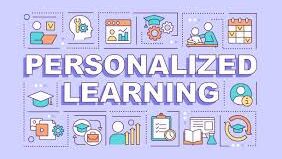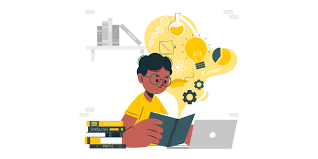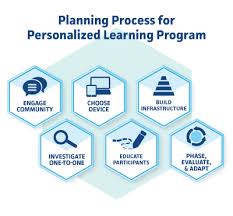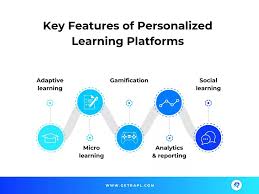
Introduction
Personalized learning platforms are revolutionizing education by tailoring learning experiences to meet the unique needs, preferences, and abilities of individual students. Unlike traditional educational systems that follow a one-size-fits-all approach, personalized learning uses data and technology to adjust the learning process, making it more relevant and engaging for each learner. These platforms leverage artificial intelligence (AI), machine learning, and data analytics to track student progress, identify learning gaps, and provide custom pathways to enhance learning outcomes. Personalized learning is increasingly being seen as a key tool in bridging educational divides and improving overall student performance.
How It Works
Personalized learning platforms utilize several technologies and methods to adapt the learning experience:
- Learning Analytics:
These platforms collect data on students’ interactions, progress, and performance. They analyze this data to identify strengths, weaknesses, learning styles, and areas where a student may require additional support. - Adaptive Learning Algorithms:
Many personalized learning platforms use adaptive learning technology, which adjusts the content and pace based on a student’s individual needs. For example, if a student struggles with a particular concept, the system can provide additional exercises or alternate explanations to help them grasp it. - Customizable Content:
Personalized platforms often offer content that can be tailored to the student’s level of knowledge. This includes interactive lessons, videos, quizzes, and gamified elements that make learning more engaging and suited to the student’s interests and learning preferences. - Real-Time Feedback:
Instant feedback is a cornerstone of personalized learning. Students receive immediate responses to their performance, helping them understand mistakes and improve their understanding. Teachers and tutors can also track student progress and intervene when necessary. - Learning Pathways:
Personalized learning platforms often allow students to choose or follow their own learning pathways based on their interests, goals, and preferred learning methods. This approach helps foster intrinsic motivation and engagement by aligning the content with what the student finds most relevant or exciting.

Potential Benefits
- Improved Student Engagement:
By offering content that aligns with a student’s interests and learning style, personalized learning platforms help increase engagement. Students are more likely to stay motivated when they see the relevance of what they are learning and experience success at their own pace. - Better Learning Outcomes:
Personalized learning helps to address learning gaps by providing targeted support where needed. Students who may struggle in certain areas are given the resources and attention to improve, while those excelling can be challenged with more advanced material. This approach can lead to better retention, understanding, and overall academic achievement. - Increased Accessibility:
Personalized learning platforms can cater to students with diverse needs, including those with disabilities, language barriers, or different learning paces. Features like subtitles, text-to-speech, and adjustable difficulty levels make learning more accessible to a broader range of students. - Data-Driven Insights for Teachers:
Teachers benefit from personalized learning platforms by receiving detailed insights into student progress and performance. This allows them to tailor their teaching methods and interventions more effectively. Data-driven insights can also help identify students at risk of falling behind early, so teachers can take proactive steps. - Self-Paced Learning:
Personalized platforms allow students to progress at their own pace, which is particularly beneficial for learners who need more time to master a topic or those who wish to move ahead faster. This fosters greater autonomy and responsibility for their own learning.
Why It’s Underrated
Despite the growing recognition of personalized learning, the concept is still underrated for several reasons:
- Technological Barriers:
Personalized learning relies heavily on technology and data analytics, which may not be accessible in all regions or to all students. The digital divide, especially in low-income areas, can limit the reach of these platforms. - Cost and Resource Intensive:
Developing and maintaining personalized learning platforms requires substantial investment in technology, content creation, and infrastructure. For schools or institutions with limited budgets, implementing such systems can be cost-prohibitive. - Privacy Concerns:
The use of data analytics in personalized learning raises concerns about privacy and data security. Collecting and analyzing student data requires robust safeguards to ensure that personal information is protected and used ethically. - Teacher Training and Adoption:
Teachers may resist adopting personalized learning platforms if they are unfamiliar with the technology or feel it reduces their control over the classroom. Adequate professional development and support are necessary to ensure successful integration into existing educational systems.

Challenges Ahead
- Ensuring Equity:
One of the major challenges of personalized learning is ensuring that all students have equal access to these technologies. Socioeconomic disparities and geographic limitations can prevent some students from benefiting from personalized learning platforms. Overcoming these barriers will be crucial to achieving equity in education. - Balancing Automation and Human Interaction:
While personalized learning platforms can provide individualized support, the human element remains an essential part of education. Striking the right balance between automation and teacher-student interactions will be key to the effectiveness of these platforms. - Standardization vs. Personalization:
Striving for personalization while still meeting standardized curriculum requirements can be challenging. Some educators and institutions may struggle with how to integrate personalized learning within the constraints of standardized testing and education systems. - Continued Development of AI and Algorithms:
Personalized learning heavily depends on artificial intelligence and adaptive algorithms to provide accurate recommendations and tailor content. Ongoing research and development are needed to improve these systems to ensure they are effective and able to meet the diverse needs of students. - Data Privacy and Security:
As more student data is collected and analyzed, ensuring that privacy and security standards are adhered to becomes increasingly important. The implementation of strict data governance policies and transparent practices will be essential to gaining trust from students, parents, and educators.

Conclusion
Personalized learning platforms represent a transformative approach to education, offering customized learning experiences that adapt to the unique needs and preferences of individual students. These platforms have the potential to significantly improve student engagement, learning outcomes, and accessibility, while providing valuable insights for teachers. However, challenges such as technological barriers, privacy concerns, and the need for equity in access must be addressed for personalized learning to reach its full potential. As technology continues to advance and more resources are dedicated to these platforms, personalized learning could become a core component of future educational systems, offering a more effective, inclusive, and engaging way to learn.

